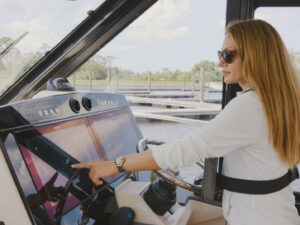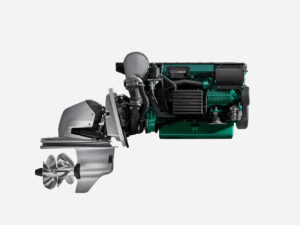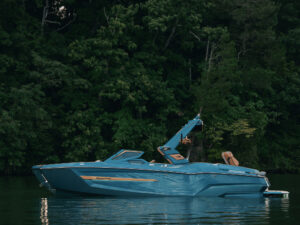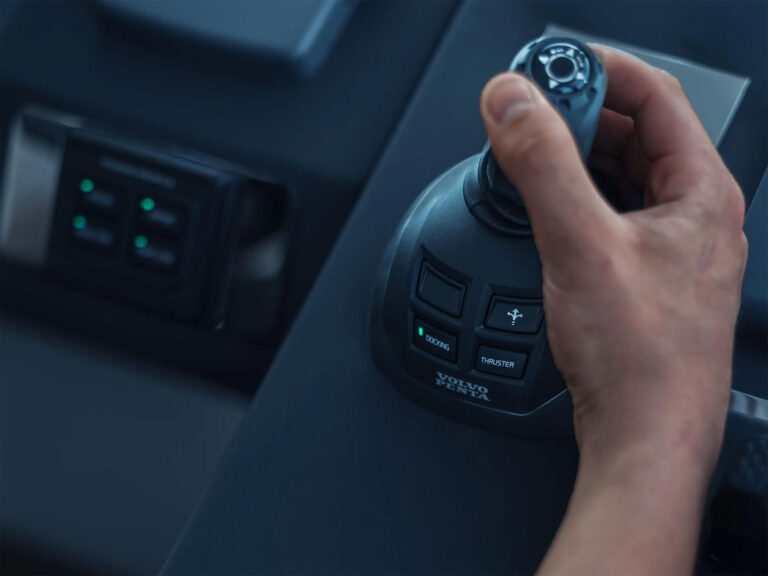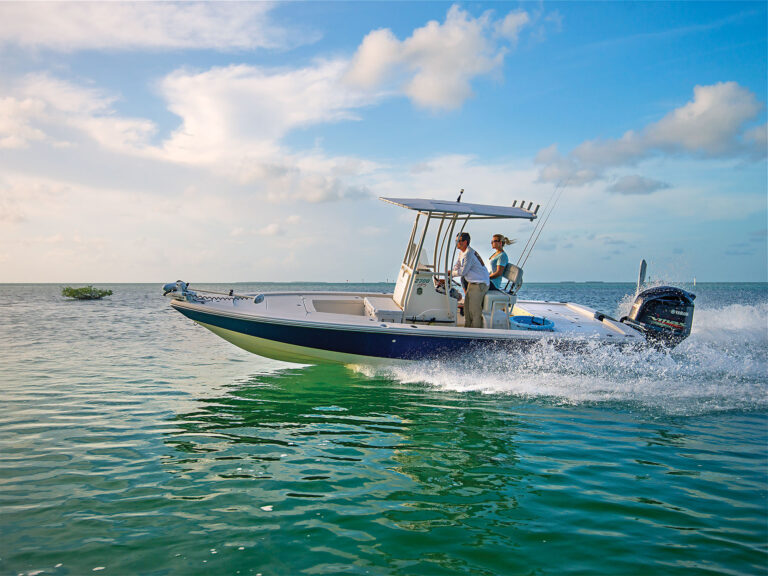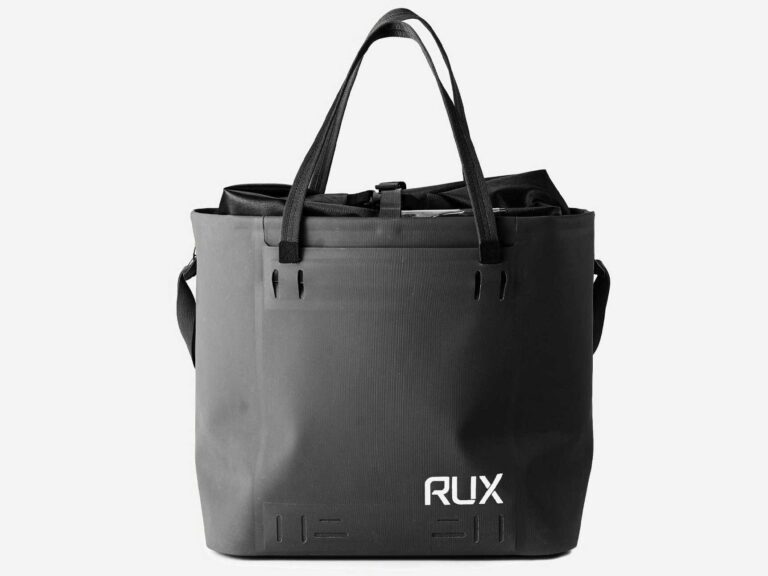
“Good luck.”
That was the response from a Massachusetts boat dealer this past summer when I asked for tips on finding a new boat in today’s market. And he’s not alone. That kind of response is typical from many dealers these days. From California to the Carolinas and Michigan to Mississippi, new-boat inventories range from limited to nonexistent, and demand is at an all-time high.
Blame COVID-19 for it all. The pandemic ignited a boat-buying frenzy, fueled by an influx of new American boaters. Restricted from travel, vacations, dining out, kids summer camps and more, COVID-19-weary throngs of families have sought new ways to recreate, have fun and stay safe. For many, buying a boat has proven to be the best way to achieve all of those goals.
According to the Chicago-based National Marine Manufacturers Association, traditional powerboat sales reached a 13-year high in 2020. More than 310,000 new powerboats were sold, levels the recreational boat market has not seen since before the Great Recession in 2008.
Data from Lending Tree reinforces the NMMA’s findings. “Interest in boat purchases doubled between 2019 and 2020,” says the internet-based lending firm. “The number of consumers completing boat-purchase query forms rose 104 percent year over year.”
At the same time, COVID-19-triggered shortages have plagued boat and outboard builders. Manufacturing—both domestic and overseas—of essential supplies such as resin, windshields, microprocessors, upholstery foam, propellers and other key components slowed to a crawl at the onset of the pandemic. So, when demand unexpectedly surged about two to three months into the crisis, boatbuilders quickly ran short of materials, hampering the completion of boats and leaving factories struggling to keep pace.
Suppliers have worked hard to rev up manufacturing, but slowdowns wrought by wicked winter weather, snarled shipping and overwhelmed ports of entry have bogged down the supply chain. The entire boating industry is playing catch-up.
The compounding effects of low supply and high demand mean that even if you can find a boat or motor, there are few bargains, even as we prepare for a post-pandemic world. “If you can find a new boat to buy, that in itself is a deal,” says Sean Hickey, east coast sales manager for Everglades Boats.
It’s a classic seller’s market. But there are still ways to find boats and motors, and to negotiate deals, according to advice we gleaned from industry insiders. Here are 10 tips for buying in a boom market.
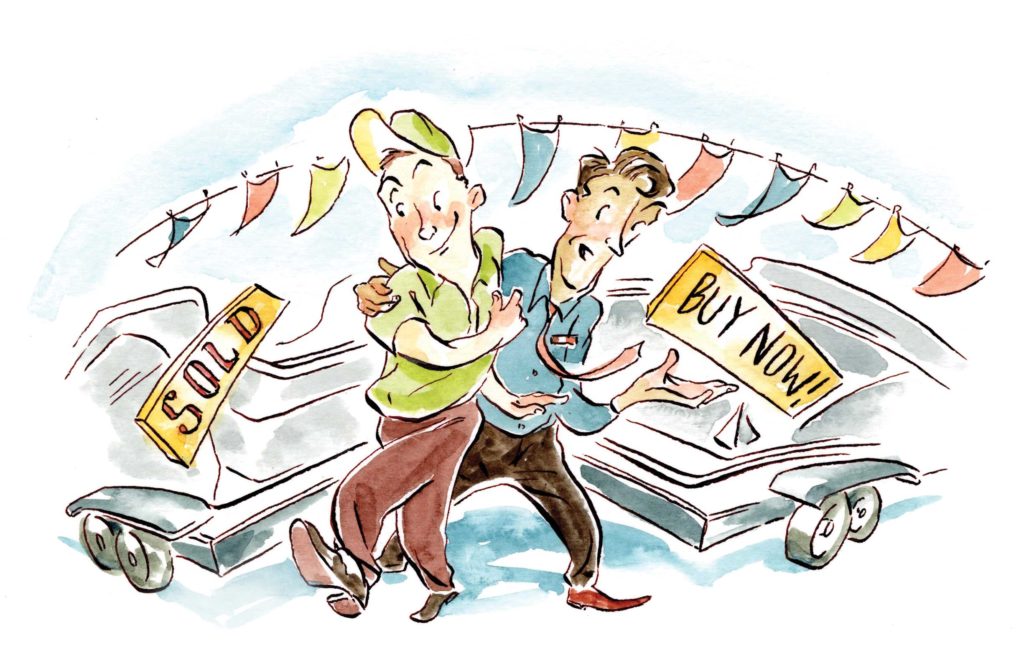
Stay Flexible
With inventories low and waiting lists for new boats as long as 18 months, shoppers might consider a model that’s more readily available, or at least available within a shorter time frame, marine-industry veteran Kim Slocum says.
Slocum currently sells Jeanneau boat brands for Elkhart, Indiana-based Walker Marine, but was also with Rinker Boats for 47 years, where he ascended to president and part owner of the company.
Slocum points to the example of the Jeanneau NC cabin-cruiser line. “For instance, while you might be eyeing a new 35-foot Jeanneau NC 1095, the wait could be shorter for a new 26-foot NC 895,” he says. In this case, you have to make the decision as to whether you want a smaller boat sooner or a bigger model later.
The same principle applies to new outboard motors, says Gus Blakely, executive vice president of sales and service for Suzuki Marine. “Consider an alternative horsepower category,” he explains. “For instance, you might be thinking about a 200 hp outboard, but there’s high demand for that power rating.
“Think instead about settling for a less-popular and more-readily available 175 that will get you ready to go and out on the water sooner.”

Consider Used
Used boats represent a different avenue, albeit a more risky purchase versus a new boat. While the boating boom has increased demand for used boats, these vessels already exist, so you don’t have to wait for the boat to be built and delivered.
The key is finding the right used boat, says Slocum, who also buys—then refurbishes and sells—previously owned boats from private owners. Slocum focuses mainly on boats from Rinker, a brand he knows inside and out from his decades with the company. He and his wife, Suzy, currently own a Rinker 380 cruiser, powered by a Volvo Penta 8.1-liter sterndrive, that the two of them refurbished.
Local Advantage
You can also look for new boats at dealers outside your region. However, once you find one, it might be better to work through a local dealer, Hickey says. “Everglades feels strongly that the best experience will be with a dealer in your area,” he explains. “Our dealers will work with other dealers outside their territories to get the boat transferred, if it is available.”
This helps ensure that service after the sale is convenient and closer for the buyer. “You can buy from a dealer outside your region, but we have found that the boat-buying and service experience is just not the same as when you work with the local dealer,” Hickey says.
Be Patient
There’s little a dealer can do to speed up delivery when there’s little to no inventory, Hickey explains. “Our company itself often needs to borrow back boats from buyers just to have Everglades models at boat shows,” he reveals.
If you have your heart set on a specific model equipped the way you want, you will need to be patient. Most Everglades dealer orders are out to the fall of 2022, and if you order the new Everglades 455 from a dealer today, you can expect delivery in January 2023. That has not seemed to deter buyers. “Everglades sold 13 of the $1.7-million-dollar boat in the first month after its introduction,” Hickey reports. “In my 11 years with Everglades, I’ve never seen anything like this.”
When it comes to outboard engines, dealer and boatbuilder orders for today’s popular engines are about 150 days out (as of this writing), according to Suzuki Marine’s Blakely. Delays in deliveries of outboards by all major brands represent a key obstacle to building boats more quickly, especially given the growing popularity of today’s outboard engines.
“The most important thing is patience,” Blakely says. “Like many manufacturers, Suzuki is doing its best to fill the supply chain as quickly as possible.”
Blakely offers a key piece of advice. “Order your new boat or outboard now, even if you don’t need it right away but anticipate a purchase in the future,” he says. This ensures that you will be in line to get your boat or motor when inventory is available and before they sell out. “For a new motor, try to order about five to six months ahead of schedule,” Blakely advises.
Move Decisively
“Be quick but don’t hurry.” Those words from legendary UCLA basketball coach John Wooden also apply to buying a boat in a boom market. “If you see a new boat at a dealership within the next year that you really want, grab it,” Hickey says.
“Don’t hold out in the expectation of a special deal because those don’t exist right now,” he adds.
“If you hesitate, someone else will buy the boat, and you will have wasted the opportunity,” Hickey says. “That’s just the way it is in this market.”
The same applies to the used-boat market, Slocum points out. “If you find a boat you’re interested in, visit the seller as soon as possible,” he advises. “In this market, time is of the essence. If the boat’s in good condition, it will sell quickly.”

Cash is King
Private-party sellers might be more likely to negotiate on price than dealers or factory-direct sales staff, Slocum points out. The seller’s openness to negotiation depends on a number of factors, including the buyer’s bargaining tools. One of the most effective is cash in hand.
Cash is an attractive offer, and it usually knocks dollars off the asking price, Slocum has discovered. It also secures the boat immediately. “In most cases, you can’t wait for the bank to approve a loan for a used boat from a private party in today’s market,” he says. “The boat will sell to someone else while you’re waiting for the bank to OK a loan.”
The same rule does not apply when buying a boat from a dealership. “Cash is not an advantage, as dealers aren’t discounting any boats,” Hickey says. “In fact, many dealers discourage cash sales, as financing represents an additional revenue stream for most.”
Targeting Trade-Ins
Some dealers and factory-direct sales outlets accept trade-ins on new boat sales, and this opens up a market to explore if you’re interested in a used boat. This could put you in a boat more quickly and for less money than a buying a new boat.
“Ask your dealer about available trade-ins as new boats are delivered,” Hickey explains. Trade-ins are not sitting around for long, he says. It’s a good idea to work in advance with a dealership to let them know you’re interested so you’re one of the first to be called if a trade-in becomes available.
Dealers and factory-direct sales staff might also be aware of pending trade-ins and when they might be available, providing you with advance notice of a purchase opportunity.
Due Diligence
Slocum emphasizes due diligence when shopping on the used-boat market. While there are many things to keep in mind, his first step is to personally inspect the boat before buying. “If you’re not familiar with the brand, take along a friend or mechanic who is,” Slocum advises.
He has developed an inspection routine and a list of key questions to ask the current owner before deciding whether the boat is worth buying. To learn more, visit boatingmag.com/used-boat- buying-secrets.

Look Far and Wide
Don’t be afraid to venture outside your geographic comfort zone if you’re serious about buying a used boat from a private party. Expanding your search radius can increase the chances of finding a good previously owned boat. Slocum often finds used boats in states far removed from his home in northern Indiana. He has hunted as far as Alabama and New York.
Most of his searches begin with the internet. “There are so many online sources, it’s mind-boggling,” he says. He and his wife like to peruse sites such as Boat Trader and Craigslist, but explore others, such as boat-owner forums and Facebook groups dedicated to particular boat brands.
“I typically look for boats located within 500 miles of us,” Slocum says. “But I will look farther out if I don’t find anything that close.” Once he completes a deal, Slocum has a triple-axle trailer and diesel truck to transport the boat if necessary.
Don’t Sell Until…
There is a huge temptation to sell your current boat now. The boom market has inflated prices, meaning you can get more money than you ever thought possible. A case in point: An acquaintance recently bought a new, custom 30-foot Nordic deck boat with a MerCruiser 600 SCI XR high-performance sterndrive. As he took delivery seven months after ordering the boat, the shop told him that he could sell it immediately for $30,000 more than he paid.
While that might result in a financial windfall, he would be unable to take delivery of the same new model anytime soon, putting him on the sidelines for the next season and possibly the one after that.
Is the trade-off worth it? For readers of Boating, probably not. Wasting months or even years of their lives waiting for a boat to arrive runs against the tide of the boat-owning mindset. So, move ahead with purchasing plans, but also keep your current boat so you don’t miss a moment of making memories on the water that will endure for generations.

